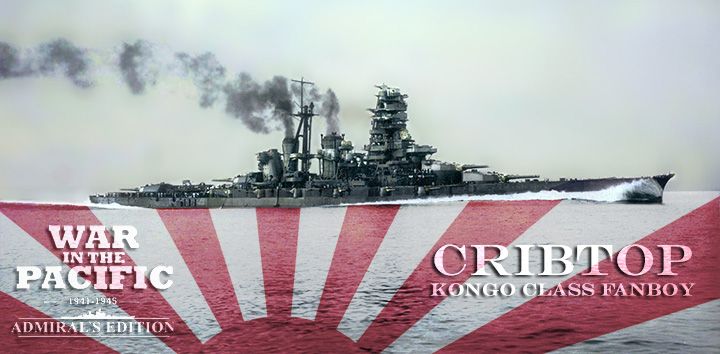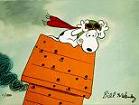Cuttlefish
Posts: 2454
Joined: 1/24/2007
From: Oregon, USA
Status: offline

|
We are gathered here, representatives of the major warring powers, to conclude a solemn agreement whereby peace may be restored.
- Douglas MacArthur, at the Japanese surrender aboard Missouri
--
And so we come to the end. I have read Q-Ball’s AAR, and a very entertaining read it was, too. It was fascinating to see that the genesis of the Timor invasion, the event that turned the tide of the war, was way back in late May ’42. It was also interesting to see how close I came to intercepting the Allied carriers following their raid in the Sea of Okhotsk early in ‘42. So very close! Had Q-Ball not had trouble refueling off the Aleutians the two forces would have met head-on.
Obviously this was a crushing defeat for Japan. That I made serious mistakes is obvious, but this should not detract from the fact that Q-Ball played a very good game. I was especially impressed, reading his AAR, with his determination to push quickly and hard once he had the advantage. The amount of effort he put into the diversion at Wake Island prior to the Timor invasion also won my admiration, to the level of putting troops aboard the transports so the losses would look convincing and Wildcats aboard Long Island so there was at least a demonstration of carrier support.
It’s no secret that my major error was in not fortifying the DEI nearly heavily enough. Even with the Allies on Timor a well-defended second line, places like Tarakan, Jolo, Puerto Princessa. Bandjermasin, etc., would have slowed my opponent down considerably. Contributing to my error was a major misjudgment about how soon and how quickly Allied forces could advance in AE. Well, I certainly know better now.
There were a number of things I did not know about AE when this game started, things that would have helped me considerably. Among them:
- The way that certain apparently unrelated units can combine. Checking the Unit Organization button is your friend. There are two naval guard units, for example, that combine to make a really powerful CD unit. Many port units combine with naval guard units to form nifty base forces with some CD capability. And many of the infantry units in the Home Islands can become full divisions with their proper sub-units present, and so on.
Well duh, CF, I hear you say. I know, silly me. Had I known this earlier I would have had some CD guns and a couple more infantry divisions in the DEI and that would have been a huge help.
- Fuel, fuel, fuel. It’s everything to Japan in this game. I focused on resources early, and it’s true that you do have to ship in a lot. But I underestimated the truly frightening speed with which Japan’s heavy industry sucks down fuel. Resources are plentiful and close to hand for Japan and sending the occasional load of oil here and there is useful. But fuel is what it’s all about. This is a big change from WITP and while I had read most of the discussions about Japanese industry when AE first came out I hadn’t really wrapped my head around it.
- Air search/attack. The IJN does not have nearly enough search planes. I should have started training my IJA bombers (Sally, Helen, Lily) for this role right away. Instead I focused on ASW training, remembering all the hits and kills against subs from the WITP days. It just doesn’t work like that now. Looking at Q-Ball’s side of the game I see that my aircraft killed a grand total of two Allied subs during the course of the war. I really needed some of those planes to be naval search/naval attack assets instead.
There were a lot of other lessons learned as well. Most of my failures were strategic; tactically I played a sound enough game, I think, with the exception of the disastrous defeat at Ambon.
Well, it’s time to put some of these lessons to work. My game against Erstad continues but I find I have room on my dance card for a new partner. Anyone out there interested in a game, especially someone interested in writing a concurrent AAR?
Oh, one final thing. I hope everyone enjoyed the quotes at the top of each AAR entry. I had a lot of fun picking them out. Most of them came from the "Dictionary of Military and Naval Quotations," by Col. Robert Debs Heinl, published by Naval Institute Press back in 1966. I am sure this book is long out of print but it's a fun book to just sit and browse through while waiting for a turn.
|
 Printable Version
Printable Version





















 following your AAR. I appreciate all the time and effort you put into it. Thank you.
following your AAR. I appreciate all the time and effort you put into it. Thank you.  Once more unto the breach.
Once more unto the breach.




 New Messages
New Messages No New Messages
No New Messages Hot Topic w/ New Messages
Hot Topic w/ New Messages Hot Topic w/o New Messages
Hot Topic w/o New Messages Locked w/ New Messages
Locked w/ New Messages Locked w/o New Messages
Locked w/o New Messages Post New Thread
Post New Thread